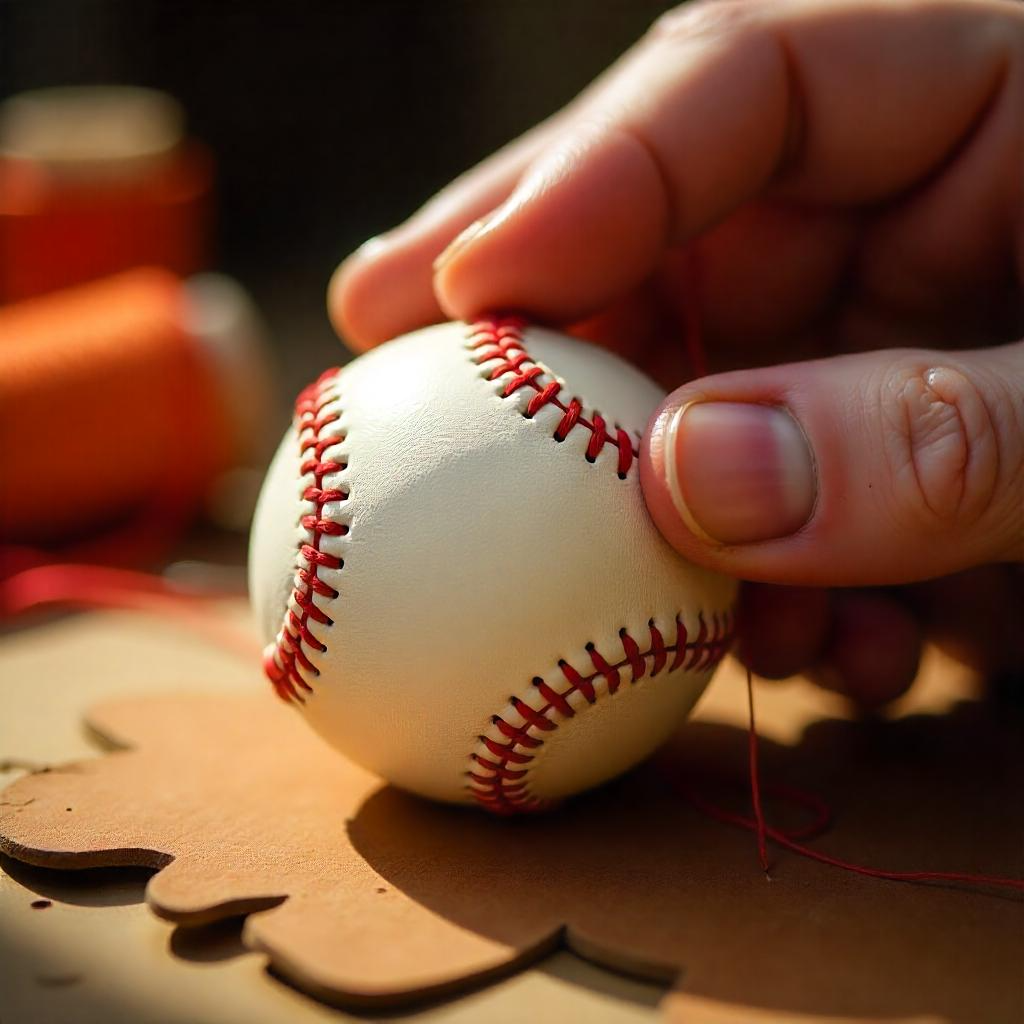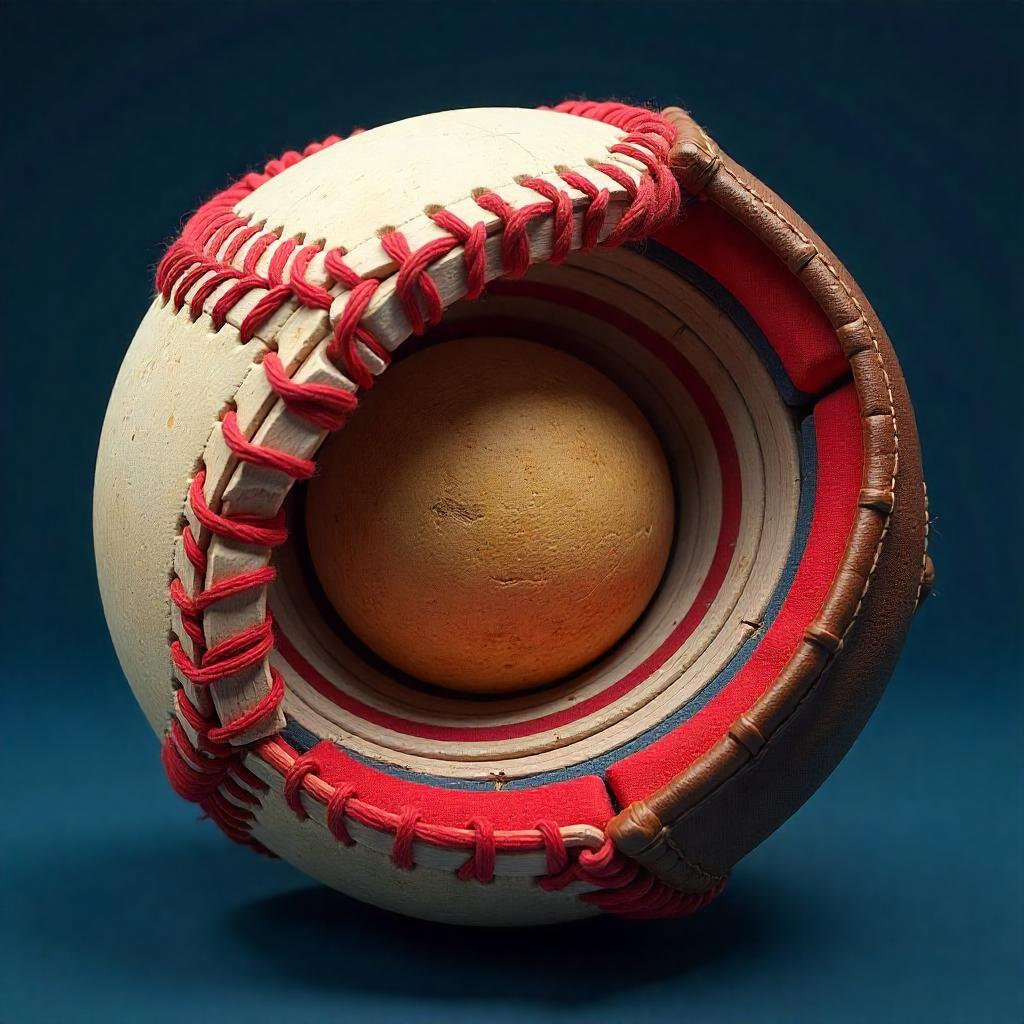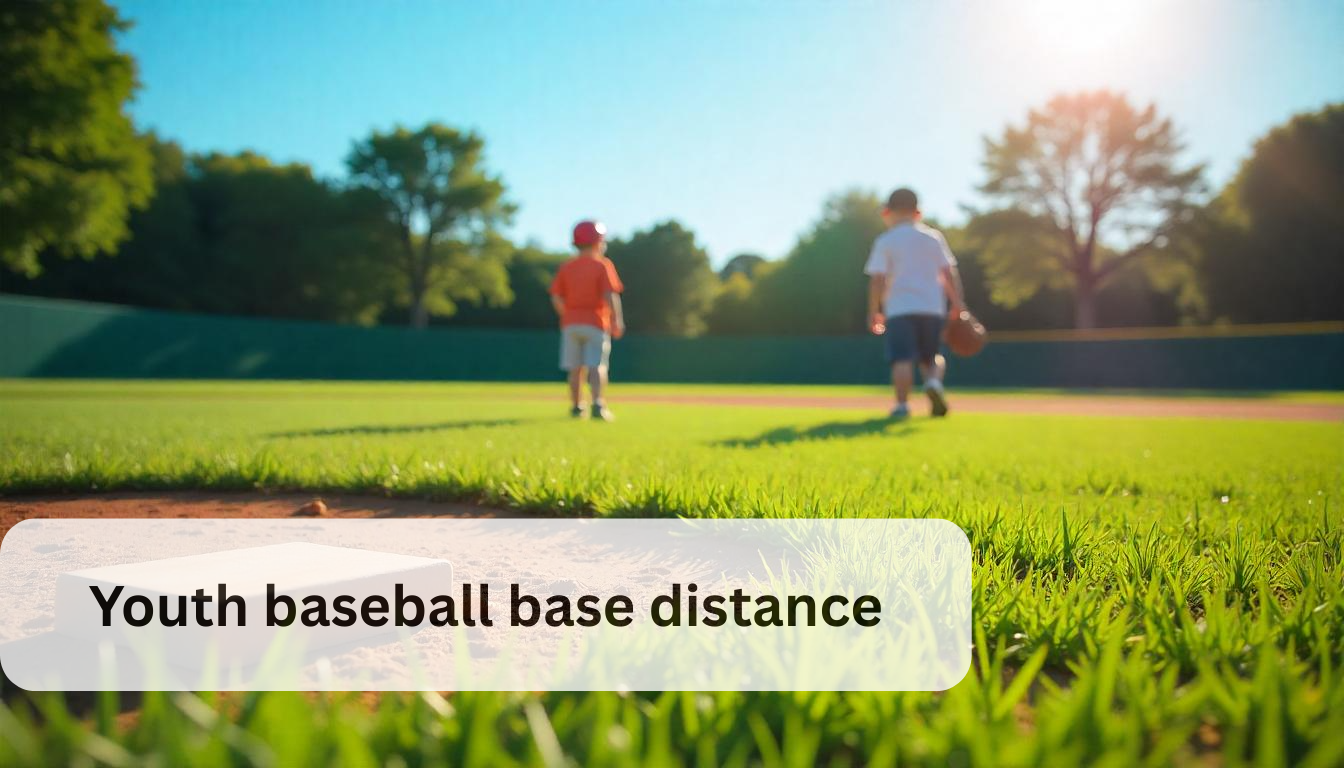Baseball is a game of precision, skill, and strategy. From the crack of the bat to the fast ball speeding toward the plate, every detail of the game matters. But one element that often gets overlooked is the seemingly simple stitching on the baseball. These stitches, however, play a crucial role in how the ball behaves during play. Let’s explore the importance of stitches in a baseball and how they influence the performance of the game.
What Are the Stitches on a Baseball Called?
The stitches on a baseball are not just decorative – they serve an important purpose. These stitches are made from high-quality cotton thread and are sewn into the leather covering of the ball. The stitching pattern on a baseball is generally made up of red cotton thread that forms a figure-eight pattern.
Interestingly, the stitches themselves are not just for aesthetics. They help the pitcher grip the ball and control its spin. When a pitcher throws the ball, the stitching provides friction, enabling them to throw different types of pitches such as a curveball or slider, which can deceive batters.
Why Are There 108 Stitches on a Baseball?
You may have wondered why there are exactly 108 stitches on a baseball. The answer has to do with the historical evolution of the game. In the early days of baseball, different stitching patterns were used, but the modern baseball now consistently has 108 stitches. This is a result of the manufacturing process and the ball’s design, ensuring it provides the right balance of durability, grip, and aerodynamics for high-speed play.
The number of stitches is also symbolic – some believe it corresponds to the 108 double stitches that are used to connect the different pieces of the leather. The 108 stitches in a baseball are part of what makes the ball so recognizable and an iconic symbol of the sport.
How Many Stitches Are on a Baseball?
You may ask, “How many stitches are on a baseball?” The official answer is 108. These stitches are evenly distributed around the circumference of the ball, making up a key part of its structure. The stitching provides not only grip for pitchers but also plays a role in how the ball behaves when hit by the bat.

While 108 is the standard number of stitches, the diameter of the baseball and its internal components also contribute to its overall performance. The mass of a baseball in kg and its overall structure are meticulously engineered to meet official standards set by baseball leagues.
Types of Stitches in a Baseball
While all baseballs have the same basic stitch pattern, the type of stitching can vary slightly depending on the manufacturer. Here are the two main types of stitches typically used in baseballs:
Hand-stitched Baseballs: These baseballs are hand-stitched by skilled workers, ensuring each stitch is precisely placed. This level of craftsmanship allows for better quality control and consistency in the ball’s design.
Machine-stitched Baseballs: Machine-stitched baseballs are more commonly used in recreational leagues and for practice. While they are still durable and functional, machine stitching does not offer the same level of precision as hand stitching.
How the Stitches Impact a Baseball’s Performance
The stitches on a baseball play an essential role in how the ball behaves during a game. These stitches help with the grip, aerodynamics, and even the spin of the ball. Here’s how:
Grip for Pitchers: The raised stitching allows pitchers to get a firmer grip on the ball, which is crucial for throwing effective breaking balls. The ability to grip the ball tightly helps pitchers control the spin, making pitches like sliders, curveballs, and knuckleballs possible.
Aerodynamics and Trajectory: The way the stitches are arranged also affects the ball’s trajectory. The seams cause the air to move differently around the ball, which can make a ball curve or dip in unpredictable ways. This is why pitchers use the seams to their advantage to confuse batters.
Impact on Batting: When the ball is hit, the stitches can cause slight changes in the way the ball bounces off the bat, depending on how it was pitched. A ball with a lot of spin might behave differently than one thrown without much spin, and the stitches contribute to that effect.
The Mass and Diameter of a Baseball
To truly understand the role of the stitches in a baseball, it helps to know about the rest of the ball’s characteristics. The mass of a baseball is around 0.145 kilograms (145 grams), and its diameter is approximately 7.3 cm (2.9 inches). These specifications are carefully controlled to ensure consistency across all baseballs used in professional games.
When combined with the design of the stitches, these physical characteristics allow the baseball to perform predictably in the hands of skilled pitchers and batters. The overall structure ensures that the ball behaves in a way that is consistent with the rules of the game.
What is the Outside of a Baseball Made Of?
The outer covering of a baseball is made of leather, typically cowhide or sometimes synthetic leather. This leather is stretched tightly over the cork and rubber core of the ball, giving it the characteristic feel. The 108 stitches are sewn into this leather to hold it in place.
The material of the ball’s exterior is important because it determines how the ball will react when it is thrown or hit. A smooth, tightly stretched leather covering is ideal for maintaining a consistent trajectory and ensuring a reliable grip for the pitcher.
The Role of Stitches in Baseball’s Legacy
The stitches in a baseball are a symbol of the sport’s history and evolution. Every time a pitcher grips the ball and throws a fastball or curveball, they are engaging with a tradition that stretches back over a century. The intricate stitching has remained relatively unchanged for generations, making it one of the most iconic features of the game.
The use of stitches in baseball also highlights the technological advancements in the sport. What once began as a simple method of securing the leather covering to the ball has evolved into a highly specialized feature that helps pitchers gain an edge over batters and keeps the game exciting.
Why Are the Stitches So Important in a Baseball Game?
The stitching plays a vital role in how the ball behaves during the game, making it an integral part of the sport. Whether you’re a pitcher using the seams to get the perfect curve or a batter trying to anticipate the next pitch, understanding the importance of the stitches in a baseball is crucial to appreciating the finer details of the game.

From the way the ball travels through the air to the grip a pitcher needs to throw a successful slider, the stitches are a fundamental element in making baseball the dynamic and unpredictable sport it is today.
Frequently Asked Questions
Why are there 108 stitches on a baseball?
The number 108 stitches on a baseball is a result of tradition and the design of the ball. This specific number ensures that the ball has the right balance of durability and performance. It also provides the ideal amount of grip for pitchers to throw different types of pitches, such as curveballs and sliders.
Are there 216 stitches on a baseball?
No, there are not 216 stitches on a baseball. The standard number of stitches on a baseball is 108. This specific number is consistent across most official baseballs used in professional games.
What stitch is used on baseballs?
Baseballs are typically stitched using a figure-eight pattern with high-quality cotton thread. The stitches are usually red, making them highly visible against the white leather cover. This pattern is essential for giving pitchers the necessary grip to control the ball’s spin.
Do all baseballs have 108 stitches?
While most official baseballs have 108 stitches, there are slight variations in some recreational or practice baseballs. However, professional baseballs, such as those used in Major League Baseball, consistently have 108 stitches, as required by the sport’s official standards.
How do the stitches affect a baseball’s performance?
The stitches on a baseball play a key role in a pitcher’s ability to control the ball. They provide friction, which allows pitchers to grip the ball better and throw breaking pitches with precision. The stitches also help control the ball’s aerodynamics, influencing its trajectory and movement.
What is the material of the stitching on a baseball?
The stitching on a baseball is typically made from strong, durable cotton thread. This cotton thread is often dyed red to make it stand out against the white leather cover of the ball. The material helps ensure that the stitches can withstand the high-speed impacts of the game.
How are the stitches applied to a baseball?
The stitches on a baseball are applied through a hand-stitched or machine-stitched process. Hand stitching is typically used for higher-quality, professional-grade baseballs, while machine stitching is more common for practice balls. In either case, the stitches are carefully sewn into the leather covering of the ball to ensure consistency and durability.
Why is the stitching pattern a figure-eight?
The figure-eight pattern for stitching is designed to provide optimal grip and stability for the ball. This stitching method is not just aesthetic but functional, helping pitchers to better control the ball’s spin, especially for breaking pitches like sliders and curveballs.
What is the impact of the stitches on batting?
The stitches on a baseball can slightly affect how the ball behaves when it is hit. A ball with more spin, which is made possible by the raised stitching, can result in a different bounce or trajectory after it leaves the bat. This makes it more difficult for batters to predict the ball’s movement.
Can the stitches on a baseball wear out over time?
Yes, the stitches on a baseball can wear out over time, especially with heavy use. As the ball is thrown, hit, and exposed to the elements, the stitching may loosen or fray. However, baseballs used in professional games are made to be durable, and their stitching is designed to withstand a significant amount of wear before becoming ineffective.
Conclusion
While it might seem like a small detail, the stitches in a baseball play a critical role in the game. They affect how the ball is thrown, how it spins, and how it behaves when hit. Understanding the importance of the stitches helps us appreciate the complex mechanics of the game and the skill required to master it.
Next time you watch a baseball game, pay attention to the ball and the role those 108 stitches play in every pitch and hit. You might be surprised by how much influence this small feature has on the sport.





